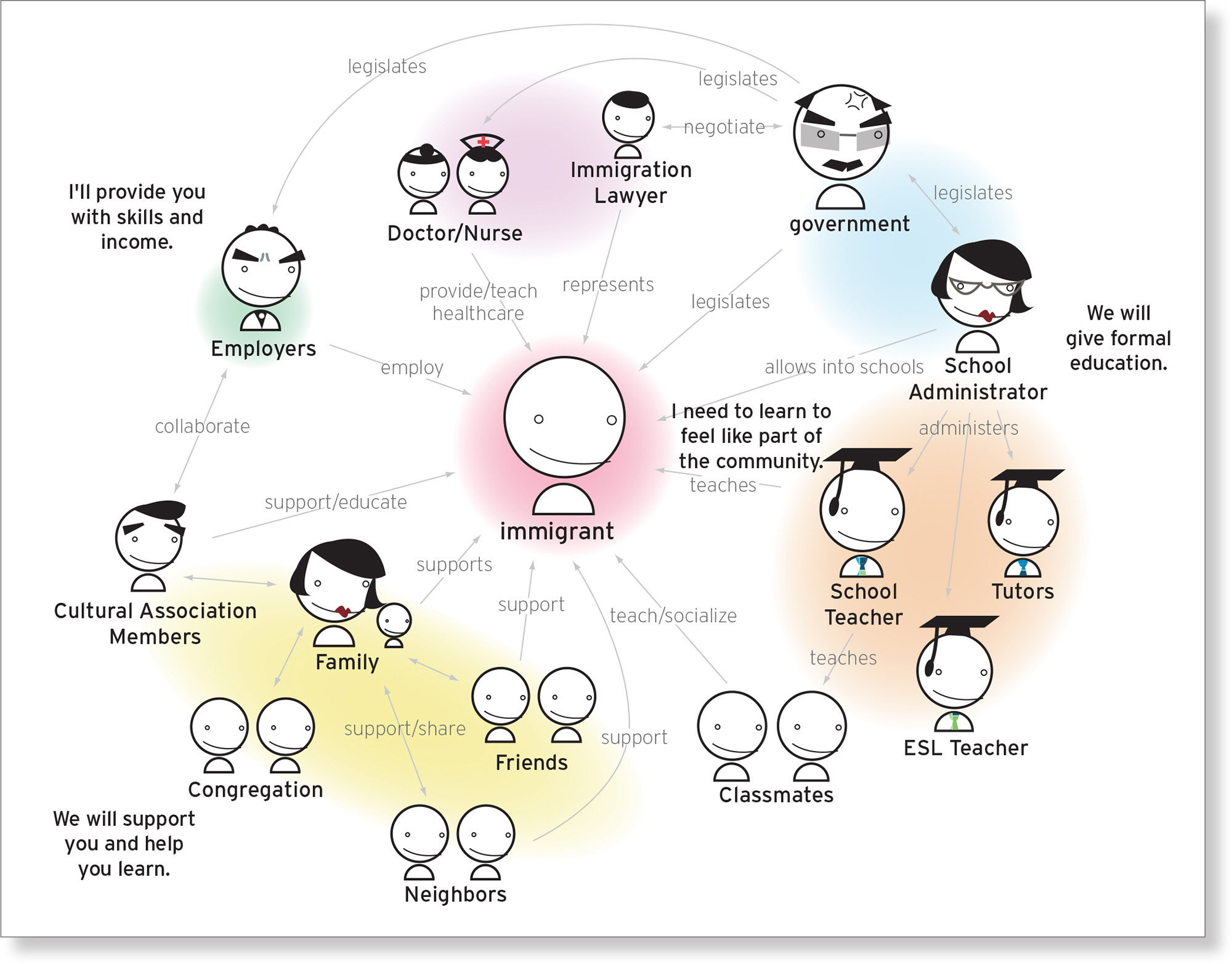SYNTHESIS / ANALYSIS TECHNIQUE
80 Stakeholder Maps

Stakeholder maps help to visually consolidate and communicate the key constituents of a design project, setting the stage for user-centered research and design development.
As the design process begins, in the planning, scoping, and definition phase, it is particularly critical to identify who all the key constituents are that might have a stake in design outcomes. Stakeholder maps serve this purpose, as a visual reference point for the design team in planning for user research activities, and guiding appropriate communication with stakeholders throughout the project development process.
Stakeholder maps are often first created speculatively, with the team brainstorming any and all people who may have a vested interest in the design territory defining the project. At this point it is important to be exhaustive. As well as identifying end users, it is critical to include people who will benefit from the project, those who hold power, those who may be adversely affected, and even those who may thwart or sabotage designed outcomes or services.
Stakeholders can be identified by general roles (students, delivery drivers, nurses), specific roles (CEO, project manager, chief of surgery), or by actual people (Robert, office manager; Linda, resident physician). The initial process can be simply done as roles posted on a whiteboard, cards, notes or paper, and consolidated as a list or sketch. The sketch then evolves into a more organized structure, defining possible hierarchies, and key relationships between roles or people. These relationships can be visualized through scale, line, and proximity, striving for sense-making and clarity of communication for the team.
From the speculative version, iterations of the stakeholder map evolve as actual constituents and their working processes and relationships are more clearly identified and defined. Gradually as the sketch is developed and consensus is reached, it will typically be visualized as a comprehensive diagram. However, stakeholder maps can take on a variety of forms, casual or formal, with a mix of text, photos, and graphics. There is no one right way of expressing the stakeholder map, so long as it serves the purposes of identifying key players and their relationships to the design team.


Stakeholder maps consolidating key players and roles for the design of “Metastar,” a social networking application for teenage immigrants during cultural transitions into a new life in the United States.
Courtesy of Kim Dowd, Norman Lau, Gretchen Mendoza, and Hyori Suri Park
